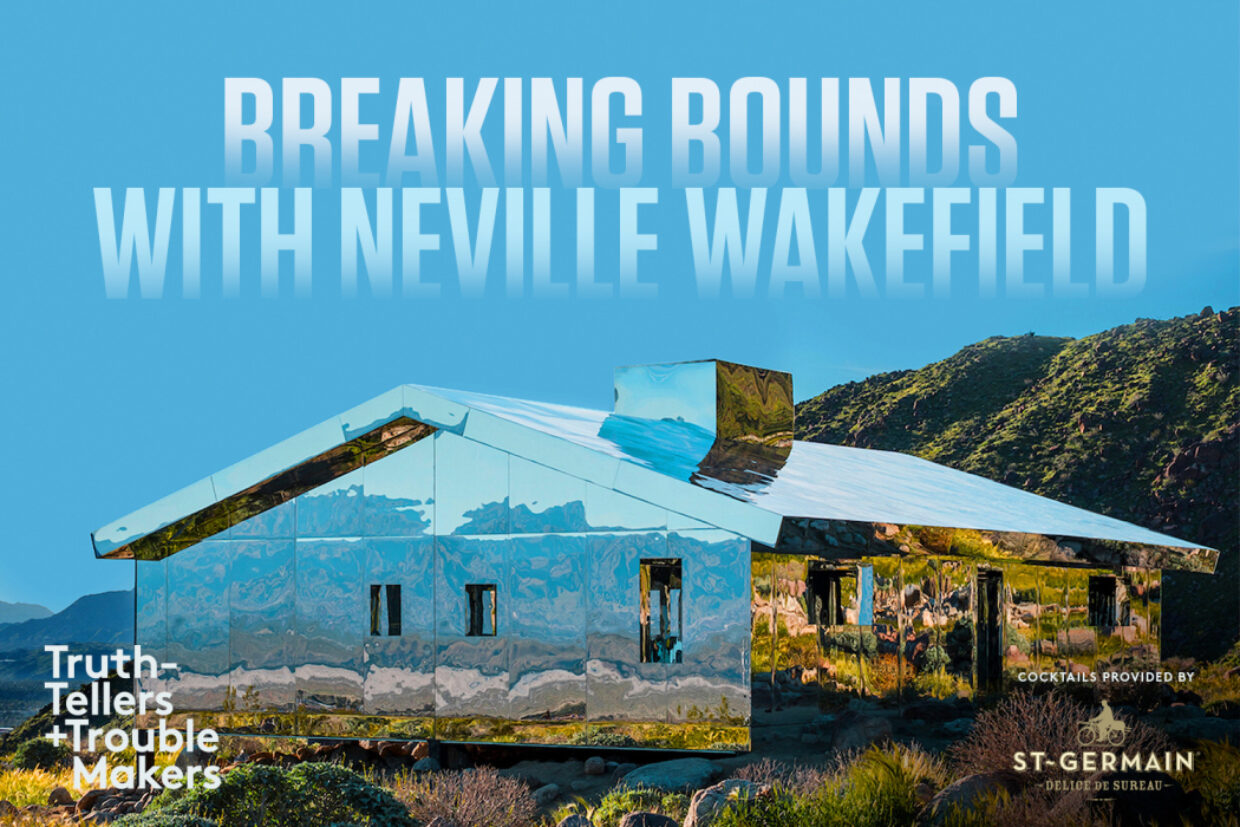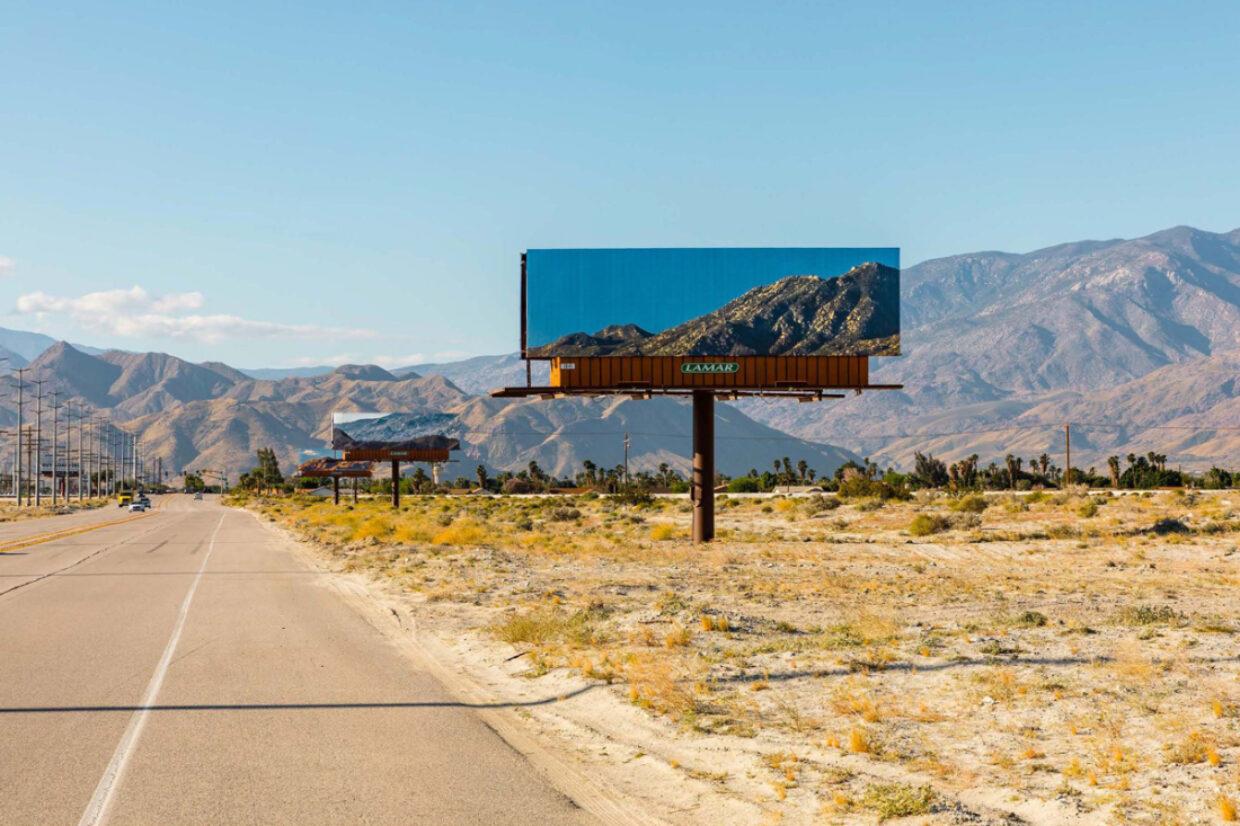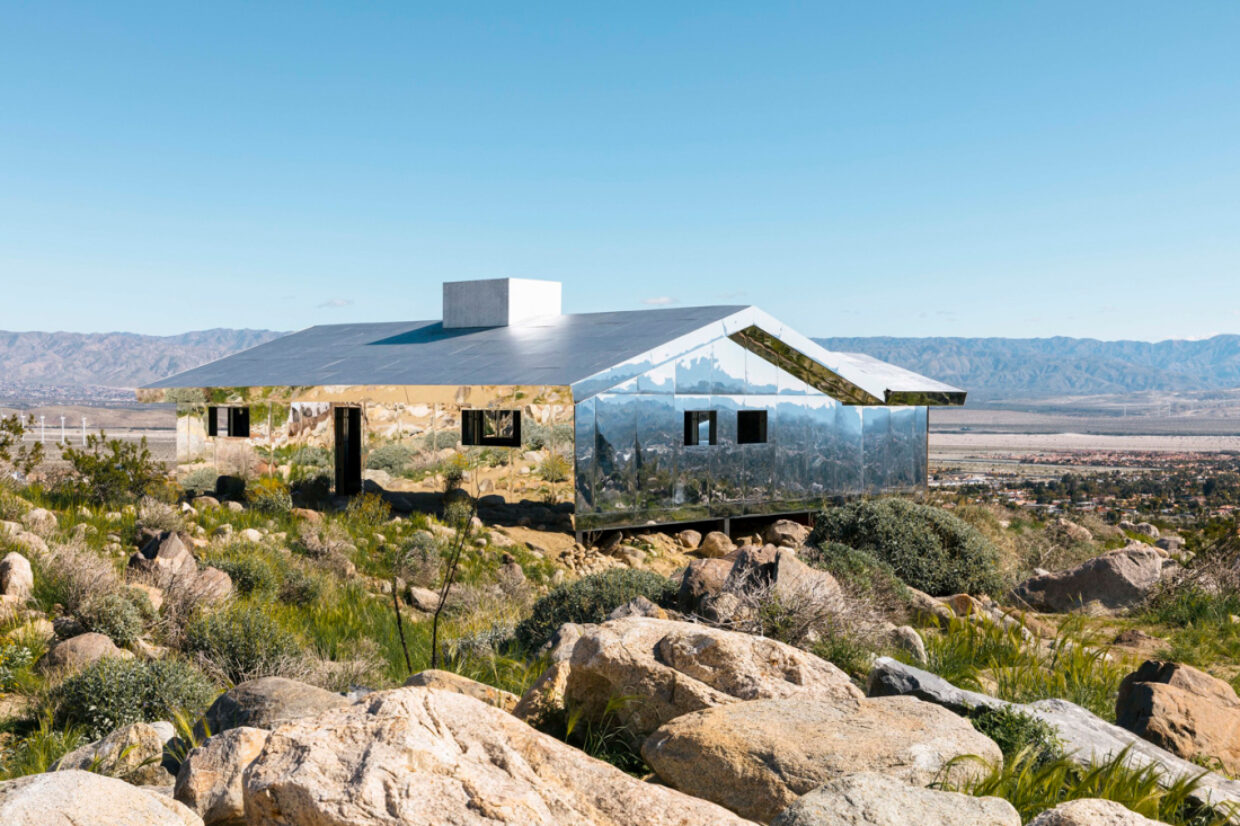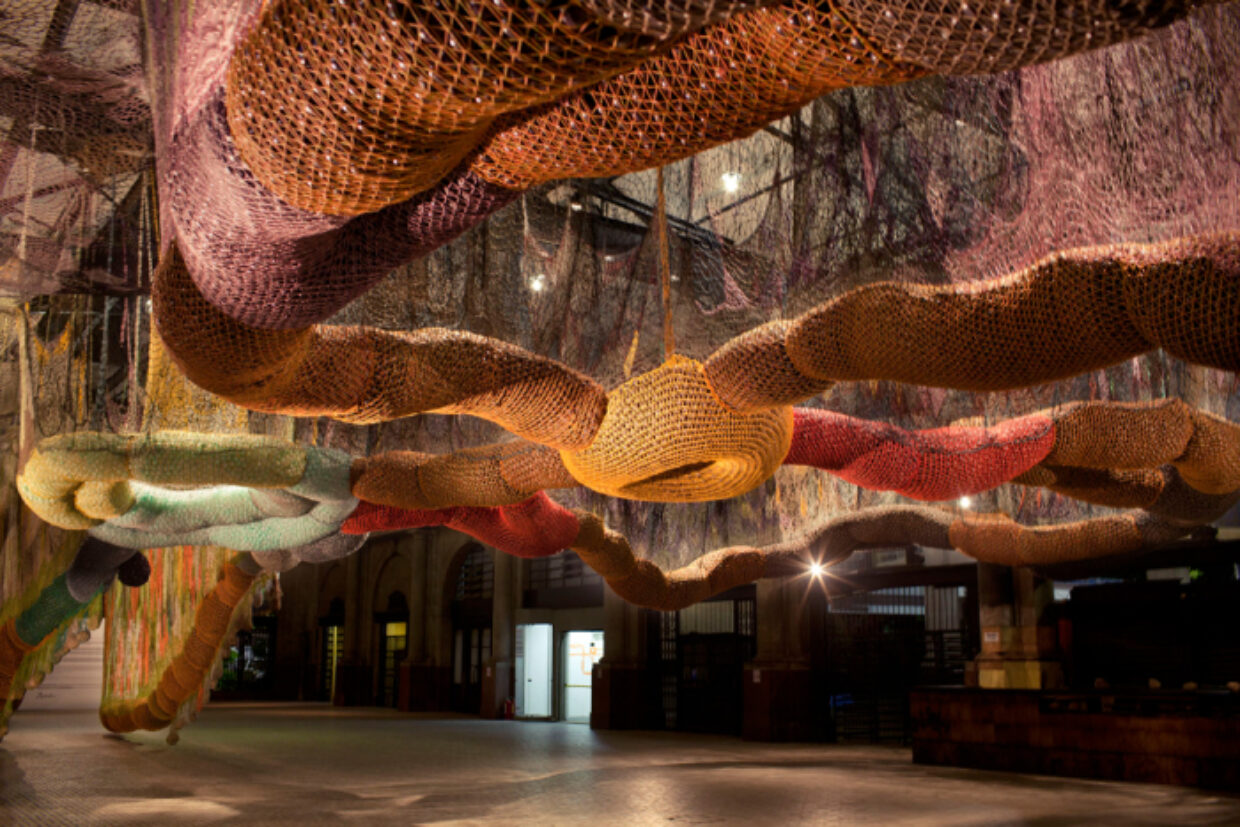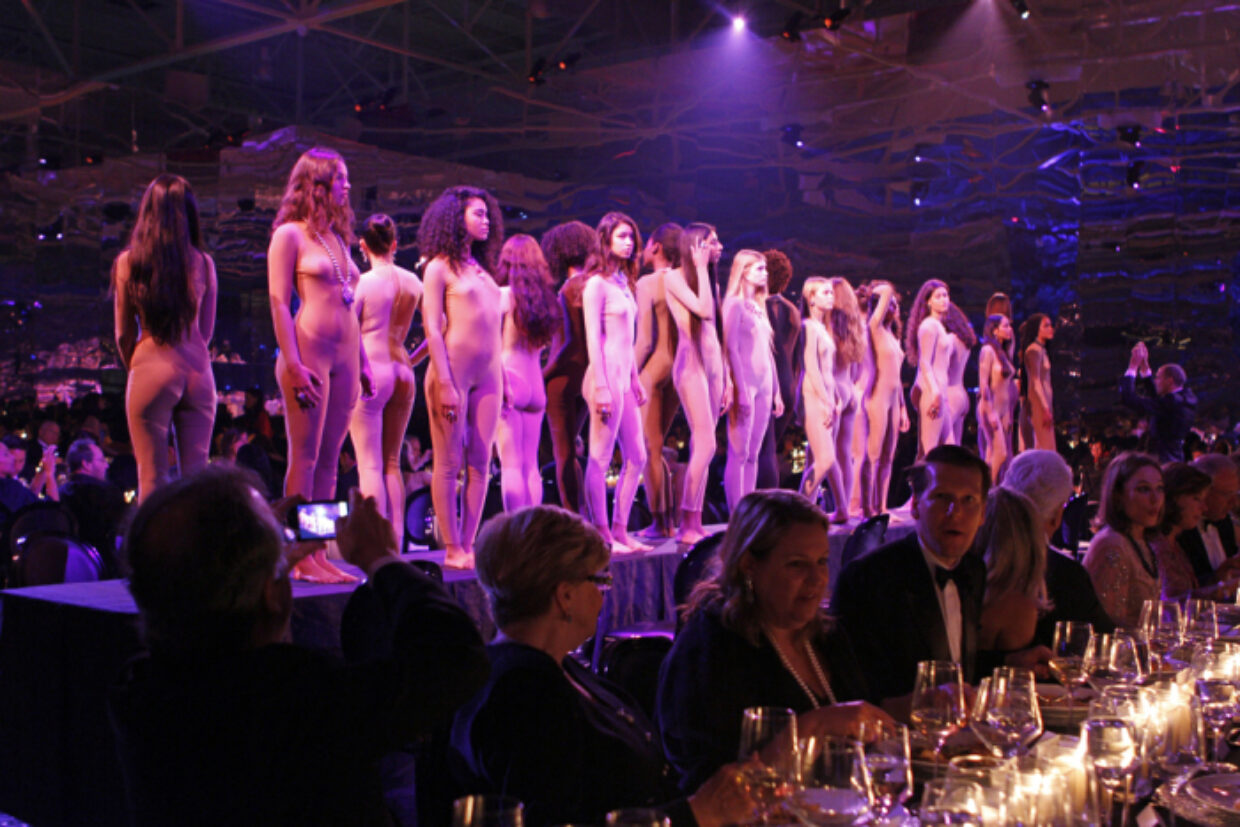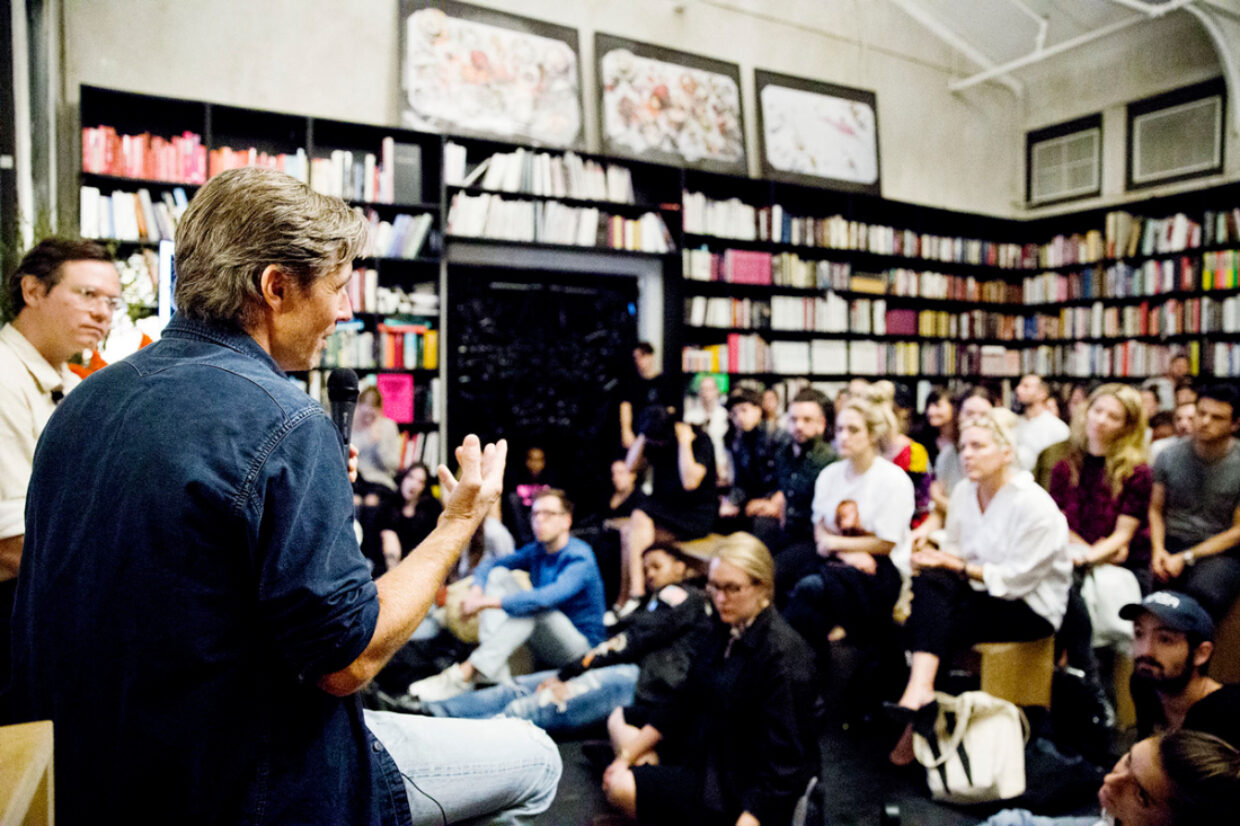The Art of Experience with Neville Wakefield
Jul. 5, 2018
Writer, curator, and creative director Neville Wakefield believes art can happen anywhere, from the top of a mountain to the depths of a desert valley. Freed from museums and galleries, it can become an unforgettable experience for everyone, including brands and their consumers. In a recent Truthtellers and Troublemakers talk in our Penthouse Library, we spoke with Wakefield about the incredible potential these experiences have to attract new audiences and partners.
What interests you about land art?
Art that exists outside of “normal” contexts provides this opportunity to find new audiences by connecting in different ways. A good example of this is Walter De Maria’s “Lightning Field.” It consists of a series of poles in a grid that maps out the area. And depending on the light, they become very visible or very invisible. What it demands of you is that you walk out into it. Strangely, for me at least, the experience is not about this kind of cosmic, theological contact with heaven and earth that you see in the famous lightning photograph but rather it’s about the micro aspect of experiencing the land, what’s beneath your feet. It’s what you’re feeling as you walk, the real textures of the world around you.
How is that different than experiencing art in a gallery?
It’s about the approach to the work. When we go to a gallery, a white cube space, it strips all context away, except the intellectual context we have, which is born of art history. With land works, it’s all about approach. Most of them are difficult to get to. For the “Lightning Field,” you fly to Albuquerque, go to a small town, get picked up by a guy in his pickup truck, get taken to a small house which is part of the land, and you have to stay there 24 hours. A lot of the motivation for these pieces is the tension between the accessible and the inaccessible.
What makes inaccessibility so appealing in art?
People like what they can’t see. Art is always about mystery, and if the mystery includes the mystery of whether it’s actually art or even if it actually exists, then that’s another layer of intrigue.
Tell us about “Elevation 1049.”
Gstaad is the ultimate picturesque clichéd Swiss village, so I wanted to bring in artists as disruptors. There were a number of pieces, all of which were again, site-specific, made on the mountains. People talk about site-specific sculpture, and at the moment, that often just means “sculpture outside.” But the version I’m interested in is where the landscape itself becomes generative. Take the piece by Swiss artist Olaf Breuning. He was interested in the choreography of ski tracks, and how that could become an action painting. Or the piece by Olivia Mosset, which placed two ice Toblerones, one at the lowest elevation in an underground car park, and the other at the highest peak. There was a train by Sarah Morris. She straddled film and painting to create a kinetic painting by transforming a local train into a geometric action painting. And there was a piece by Thomas Hirschhorn in a small village just outside Gtsaad called Lauenen. What was great about many of these pieces was the way they engaged the local audience. At first with Hirschorn’s piece there was a certain amount of resistance. Unlike Gstaad, Lauenen isn’t a global village; it’s a Swiss village in a very traditional sense of cows and wood. Hirschhorn stayed there for just over a month to make it. And he made it entirely with the community, and in the end it was the local community became the most active force in this piece.
What do you think your role is as curator of these projects?
To provide a platform for artists to do work. I’m not about directing artists to these various sites and saying you should do this kind of work here. It’s about allowing the place, in this case the mountains or the desert, to act as curator.
Tell us about Desert X, your installation in the Coachella Valley.
Desert X consisted of 16 works, spread from the low desert over an area of about 40 miles. What’s interesting to me about this kind of show is that the works act as nodes to focus your interest. A lot of the show is about the spaces in between, about how you get from one site to another, and that determines how the show is narrated. Of course, you can go into a gallery and choose to walk around clockwise or zig-zag across, but here there’s much more self-determination, in terms of what works you see, what sequence you see them in. What you choose to experience in-between the works and so on.
“A lot of this work is hybridizing forms that we’re quite familiar with, and giving them a sort of experiential aspect.” — Neville Wakefield
Can you share a bit about the different sites?
Doug Aitken’s piece was called “Mirage.” He took the form of a tract house and completely covered it in mirrors. It’s the inside, looking out. He’s done works before where he’s projected on architecture (like his piece called “Sleepwalkers” with Tilda Swinton, projected on MOMA in New York). This was a continuation of that except, but he was cinematizing the architecture itself. So the whole building, the whole structure became this cinematic experience.
Or this piece by Jennifer Bolande?
Yes. It’s called “Second Sight.” It was a series of billboards meant to be seen from the car. The experience of the desert for most of us is a kinesthetic experience: we see it screened through the window of the car, because you tend not to get out. She worked with a company called Lamar, which runs most of the billboard stuff out there, using the billboard as an opportunity to really advertise the landscape itself. Each one was sequential and it drew on advertising language. Then there’s a moment with each of these where the horizon of the billboard locks into the actual horizon, but it’s a split second and it can’t be reproduced. Many of the pieces are focused on this desert itself…
One artist was interested in patterns of migration, particularly amongst birds, and how that has become a metaphor for patterns of human migration. This site isn’t that far away from the Salton Sea, which became a bird sanctuary. Another piece by Glen Kaino referred to the idea of the underground in the desert. It’s a small shed and then you go into it and look into this shaft which could be a tunnel or a missile silo; it’s just six inches deep, but it’s obviously an illusion, but it was incredibly effective. And one of my personal favorite pieces here is by an Italian artist who goes under the moniker of Norma Jean. He’s interested in the connection between the desert and Silicon Valley, and particularly AI. So he made this land rover which he called a “shy bot.” It was an autonomous vehicle with solar power, and was pretty quick, designed to do the thing that most machines aren’t designed to do, avoid human beings. We had a lot of conversations about what that meant, what it meant to be timid. My understanding was that it was going to be fugitive, in other words it would really run from humans. He was adamant that it should have a degree of curiosity. Curiosity killed the cat in this instance, and it got abducted about three days in, by someone who really knew what they were doing. We then put up some “wanted dead or alive” shy bot posters and billboards.
Did you get it back?
No. No, it could still be out there! What was great about it conceptually is that we go really not knowing what we’re looking for. People go to find themselves, they go to find God, they go to find whatever it is. Shy bot represented that thing that people might look for but not find.
It’s interesting to see how very different these pieces are from one another. How much latitude did you give to each artist?
As I was saying before, it’s all about latitude. This type of work is about their particular engagement. I’m not interested in my version of the desert, as much as how artists react to it. How they disrupt preconceptions about it, and see it through different eyes. I don’t tell them to do anything. We tend to do a ton of site visits and follow their interests.
How do you fund these projects… and what’s the impact in terms of engagement?
Some of the pieces were privately funded. The main donor for Desert X was Golden Voice (the people behind Coachella). For Desert X, it was a first outing, so it needed to go through this proof-of-concept phase. There was no advertising for the show prior to its opening (in fact there wasn’t even an artists’ list). But just looking at the metrics from the website, we had 15,000 uniques before, and by the end, we had 1.8 million. The number of actual visitors was just under 300,000. So it had enormous impact on the community, the area, and beyond.
“It was a living artwork that changed every time you went to see it. That’s the thing that allows these kinds of shows to really take on a life of their own. No two experiences are the same.” — Neville Wakefield
How do you approach designing these kinds of experiences?
The development of it is the most exciting part. The creative brief was the desert. To make the letter of introduction meant having to assemble my thoughts about the desert in a single document: the physical landscape, the historical landscape, and its cultural impact. Then with the artists, it was a very organic process.
Do you think more artists are interested in these sorts of site-specific land engagements?
I think everyone wants to be a land artist! A lot of these artists are looking for opportunities to reach outside of the gallery world. The original impulse behind ’70s land art was that it was anti-materialistic and anti-institutional. It couldn’t be sold and it didn’t fit in a museum. In these particular times, where it’s so market-driven, those impulses are very appealing to artists.
How do these installations inform your collaborations with brands?
I think it’s really about finding new ways of disrupting preconceptions in order to get attention – which is what a lot of brands are after at the moment. Artists have historically been disruptors, so for brands brave enough to really engage with that, it offers a huge opportunity. As creative director for Adam Kimmel, I did a trilogy of films based on masculinity and how male clothing can enter different arenas: skateboarding, bull riding, and underwater. In each we took a very simple and essentially boaring idea of a man in a suit and put them in unusual contexts. I also did a collaboration with the artist George Condo, making masks for Adam’s Casino Collection, which became a performance piece. A different example would be thefilm series “Destricted,” that I created as a way of exploring the outer regions of sexuality and censorship. We commissioned films from people like Gaspar Noe, Marco Brambilla, Larry Clark, Matthew Barney, Marina Abramović, and Sam Taylor Wood. More directly interacting with the landscape of advertising was “Commercial Break” in collaboration with Garage that I curated for the Venice Biennal in response to the fact that Venice at that time had a ban on advertising. So we commissioned 120 artists to make short, 30-45 second films. What they were really being asked to advertise nothing other than their own vision.
Tell us about your Nike collaboration.
This was actually a good example of where I think a collaboration between a brand and an artist can work really well. I was appointed as global curator for the Nike Flyknit launch, and we did various activations in various parts of the world, of which this was one. They were interested in introducing the shoe as being about lightness, performance, sustainability, and really reinventing the idea of running shoe, in terms of it being a soft architecture. Ernesto Neto, a Brazilian artist, had been making these inhabitable immersive structures, also out of woven cord. You could enter into them; they were huge, in a 10,000-square-foot space in downtown Rio. What was really what was great about it was it communicated what the Flyknit shoe was about, adaptive architecture. You went into it, felt it on a different scale, and understood the correlation between his working method, his vision, and this product. It was successful because it was a natural correlation and unforced. People came there and engaged with the art. It opens itself up to new forms of sponsorship in this way. The usual prohibitions to not touch are lifted from these immersive environments. You can touch, crawl into, photograph it: you can do anything you want. It’s about your interaction with it, so the product becomes a souvenir, reminiscent of the experience.
And what was the process of working with Nike like?
I proposed Neto as one of the people to participate in this bigger program, and we went to Portland two or three times with him, to speak to the designers there and spend time in the kitchen. We built on that.
And who does the artwork belong to after it’s shown?
In this instance, it belonged to Nike, but they donated it to Inhotim the amazing sculpture park / collection of pavilions in Brazil.
Can you share other examples of brands that successfully took a risk with art?
We did a David Yurman collaboration, a meteorite jewelry range, staged with actual meteorites and NASA imagery. Or for Van Cleef and Arpels: they asked me to help design a mirrored hall, with a forest on the other side. It was a dialogue between nature and artifice. And in the forest, there were a number of performances from people like Nick Cave (the sound-suit artist from Chicago), and during dinner, a performance by Vanessa Beecroft. This was just a great example of a brand that was able to push itself out there, to deal with things that aren’t necessarily associated with jewelry and that luxury world, and they pulled it off and it really engaged people.
What makes artists such effective disruptors?
Art should in some ways be amateur. Raymond Pettibon once wrote in a work that ‘professionalism is a hate crime’. It’s incumbent on artists not to be professionals. If they’re really going to do work that disrupts and changes up the perceptions of the world around us, that can’t become too good at what they do.
What are your thoughts about the future of advertising, and this collaboration we’re seeing so much of between artists and major brands, who have deep pockets to fund large scale projects?
Artists have always been the sort of R and D department for advertising agencies. You go into agencies and what you see on the wall is artworks that then get transmogrified into advertising. What’s happening now is really fantastic, because it’s actually a much more direct conversation between the client and the artists. It doesn’t have to go through this extra layer of interpretation. The Neto piece is a good example. Despite growing up in Rio, Neto had never had a major Rio show, but this facilitated that. If done right, it can work for both parties.
A lot of brands that don’t have an authentic connection to art are also jumping on the bandwagon. Do you think there’s a tipping point, when it’s going to stop being effective and just be more noise?
I don’t really have a crystal ball about that, but there’s a lot of stuff that’s not very good out there. The impulse to draw art into every aspect of the luxury goods market as a sort of “gold rush” is over. But in terms of doing collaborations that are really considered and benefit both sides of the equation? I think that’s still full of potential.
Source: Chandelier Creative
